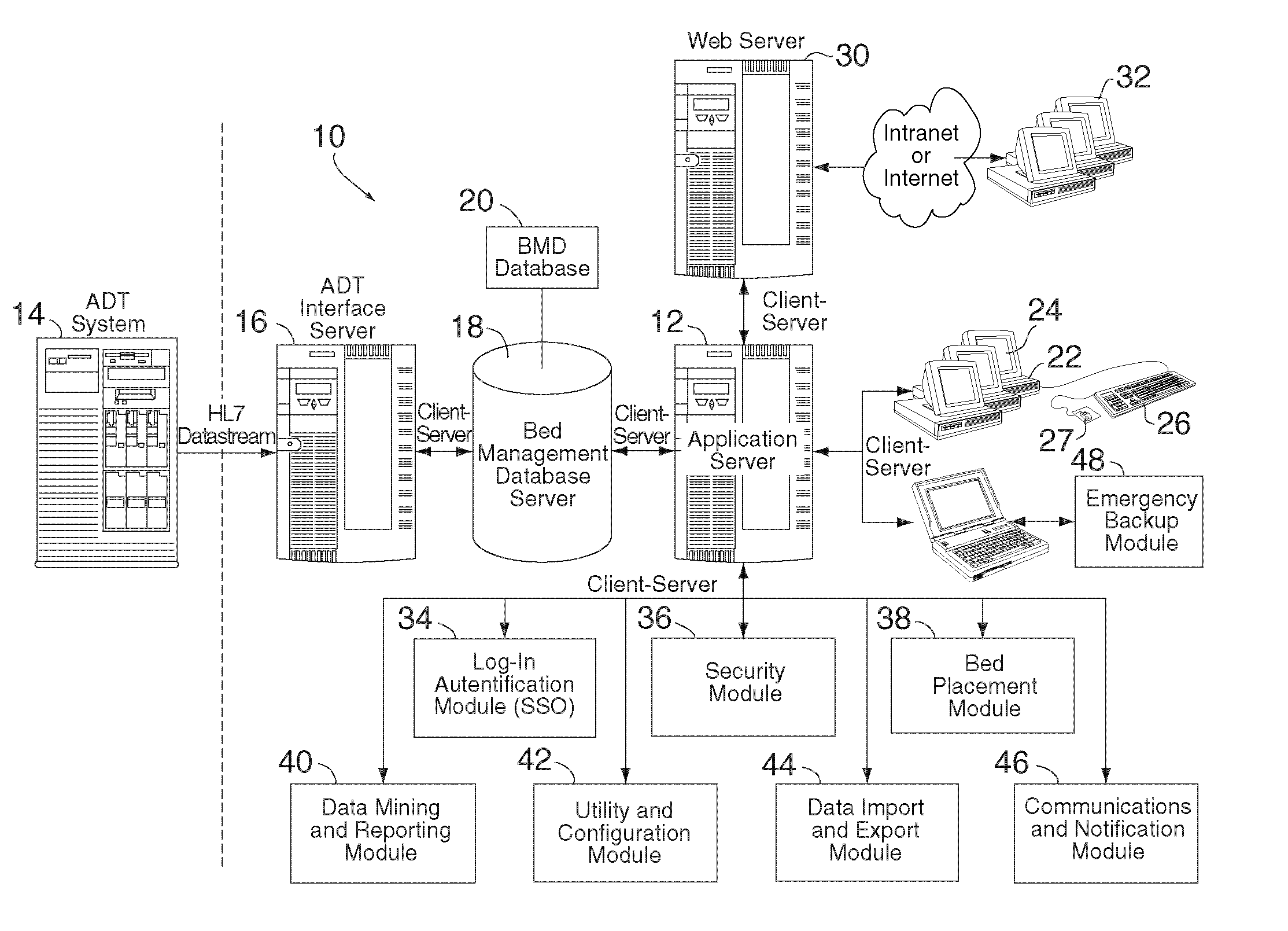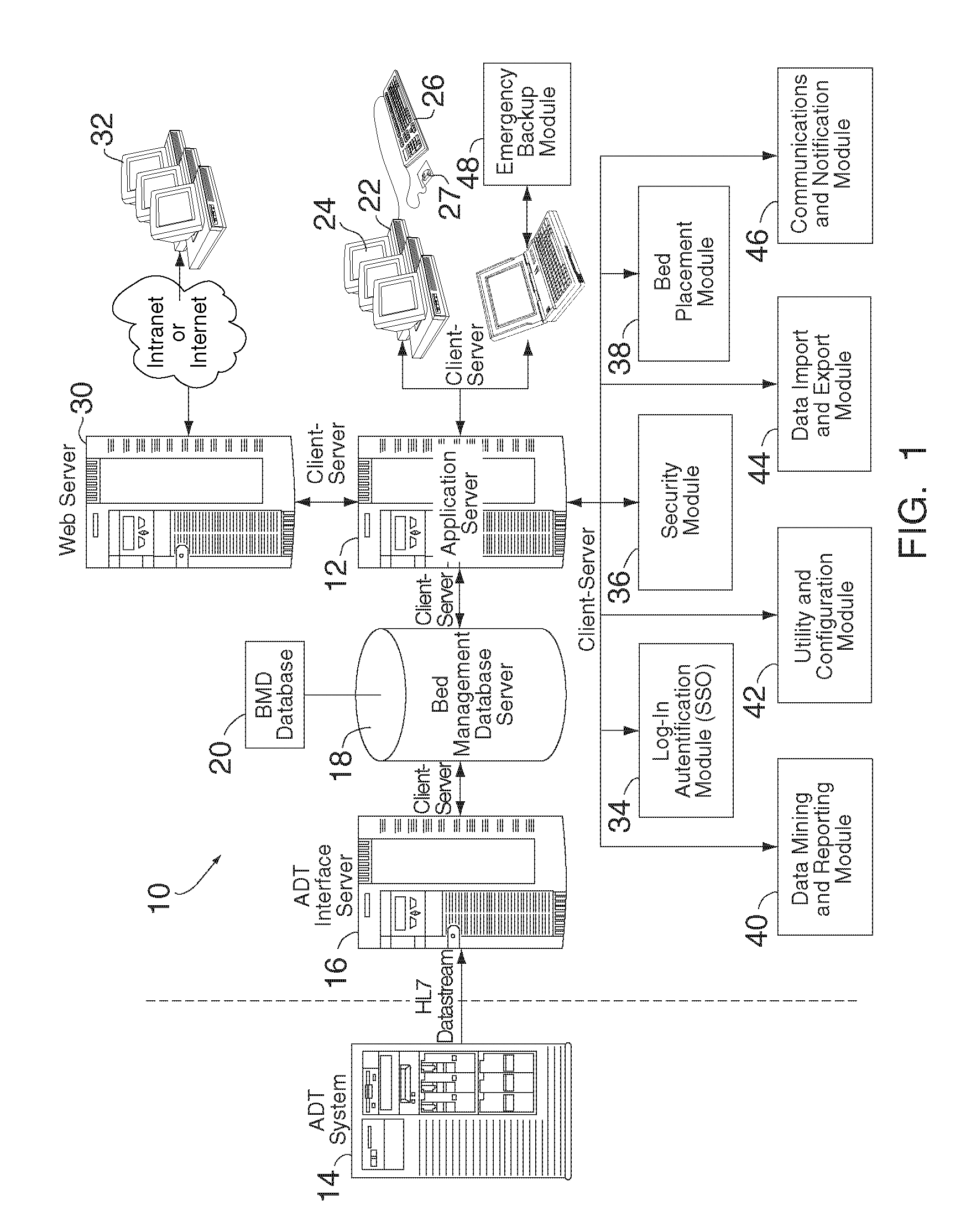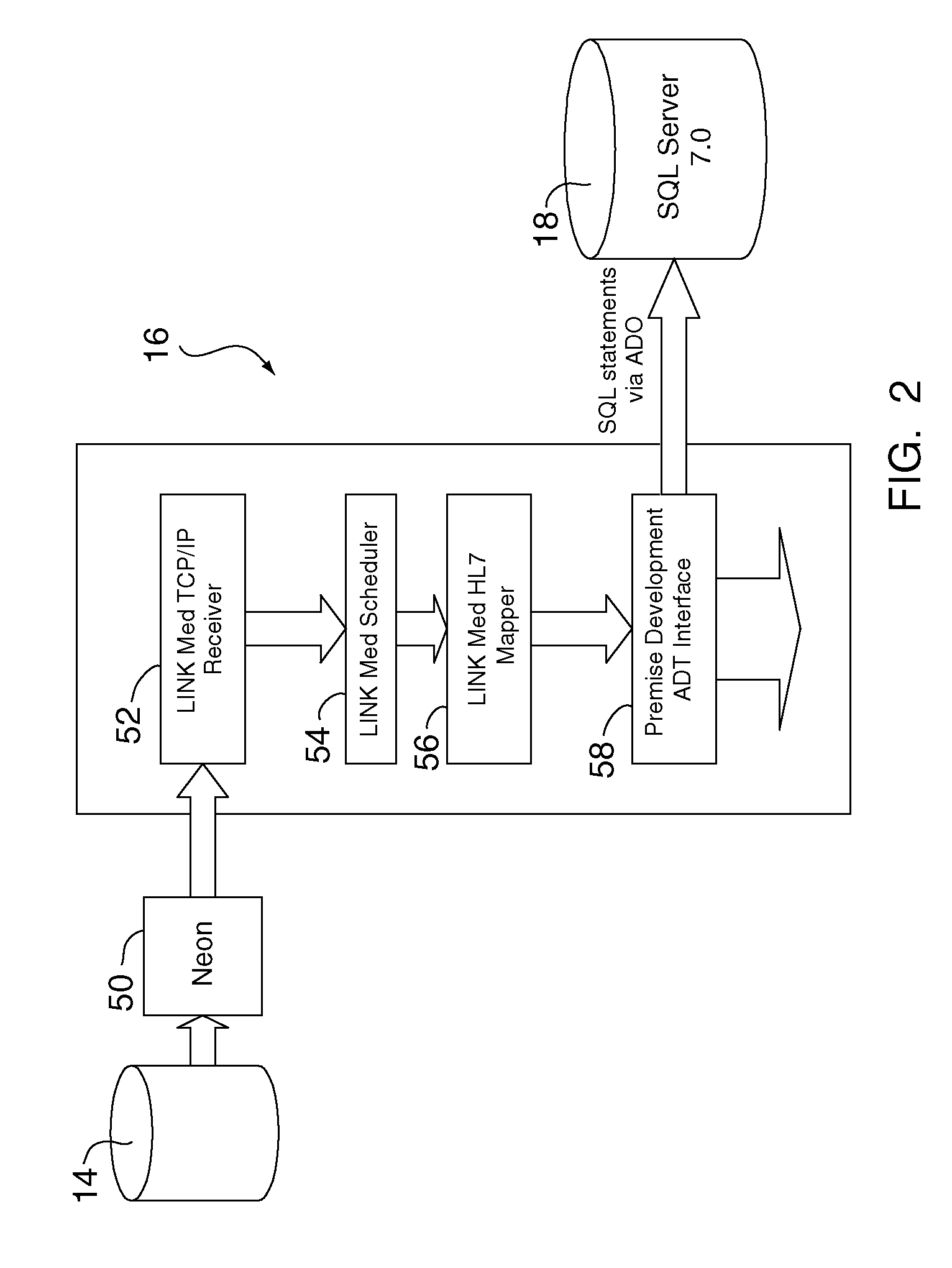Managing Patient Bed Assignments and Bed Occupancy in a Health Care Facility
a technology for managing patient beds and patient beds, applied in the field of managing patient beds and bed occupancy in health care facilities, can solve the problems of lack of accurate bed availability information, inability of current adt systems to provide sufficient clinical information for appropriate patient placement, and existing problems in adt systems, so as to avoid patient diversions and maximize bed resources
- Summary
- Abstract
- Description
- Claims
- Application Information
AI Technical Summary
Benefits of technology
Problems solved by technology
Method used
Image
Examples
Embodiment Construction
[0016]FIG. 1 is a diagram of the preferred embodiment of the bed management system of the present invention.
[0017]FIG. 2 is a diagram of an ADT interface as used with the present invention.
[0018]FIGS. 3 and 4 are tables illustrating patient data extracted from an HL7 message received from the ADT system of a health care facility.
[0019]FIG. 5 is a diagram of one embodiment of the database of the present invention system.
[0020]FIGS. 6A-6Y are illustrations of the data tables and fields thereof as stored in the database of FIG. 5.
[0021]FIG. 7 is a diagram of the system of the present invention coupled to an authentication module for the network of the health care facility.
[0022]FIG. 8 is an illustration of a login screen as used by the bed management system of the present invention.
[0023]FIG. 9 is an illustration of a role configuration screen as used for configuring the system of the present invention.
[0024]FIG. 10 is an illustration of a user configuration screen as used for ...
PUM
 Login to View More
Login to View More Abstract
Description
Claims
Application Information
 Login to View More
Login to View More - R&D
- Intellectual Property
- Life Sciences
- Materials
- Tech Scout
- Unparalleled Data Quality
- Higher Quality Content
- 60% Fewer Hallucinations
Browse by: Latest US Patents, China's latest patents, Technical Efficacy Thesaurus, Application Domain, Technology Topic, Popular Technical Reports.
© 2025 PatSnap. All rights reserved.Legal|Privacy policy|Modern Slavery Act Transparency Statement|Sitemap|About US| Contact US: help@patsnap.com



